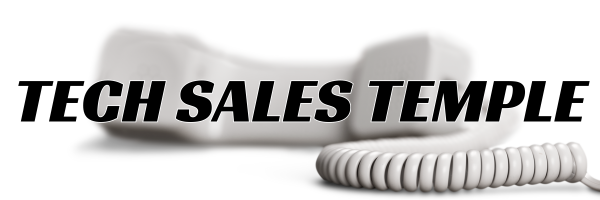
As tech sales professionals, understanding pricing models is critical to effectively selling your product—and two of the most talked-about approaches today are consumption-based pricing and seat-based pricing. With the surge in AI-powered platforms and large language model (LLM)-related technologies, consumption-based pricing has rapidly gained traction. Companies like AWS, Snowflake, Databricks, MongoDB, and OpenAI are proving that this model can be a game-changer in how tech products are sold and experienced.
This blog post will demystify consumption-based pricing, show how it stands apart from seat-based pricing, and explore strategies for selling consumption-based products successfully.
What Is Consumption-Based Pricing?
Consumption-based pricing, sometimes called usage-based pricing, revolves around a simple principle: customers only pay for what they use. Instead of committing to a flat-rate subscription or paying per license, users are charged based on their actual consumption of the product.
For example, think of AWS (Amazon Web Services). Instead of committing to a fixed monthly fee, customers pay based on how much cloud storage they use or how many compute hours they need. Similarly, Snowflake charges customers based on storage and compute power consumption.
This model aligns directly with customer usage. Heavy users pay more, while infrequent users pay less. For tech companies scaling with high-demand customers, this opens doors to significant opportunities—and fewer churn risks for customers who feel they’re getting value for every dollar spent.
How Is Consumption-Based Pricing Different from Seat-Based Pricing?
To understand the impact of consumption-based pricing, it’s essential to draw a distinction between it and seat-based pricing, a more traditional model.
Seat-Based Pricing
- Definition: Seat-based pricing charges a flat fee for every “seat” (or licensed user) that has access to the product.
- Example: A CRM provider, for instance, might charge $50 per user, per month. Whether the user actively uses the tool daily or logs in just once a month, the cost remains the same.
- Key Benefit: Predictable revenue for the vendor, since pricing scales linearly with the number of users in an organization.
Consumption-Based Pricing
- Definition: Charges are based on the actual usage of the product.
- Example: OpenAI charges based on the number of API calls and tokens processed. Similarly, Snowflake’s pricing depends on how much data customers store and the compute power they use.
- Key Benefit: Customers are billed in alignment with the value they derive from the product, offering flexibility and fairness.
Comparison Chart
| Aspect | Consumption-Based Pricing | Seat-Based Pricing |
|---|---|---|
| Billing Structure | Pay-as-you-go (usage-based) | Flat-rate per user/seat |
| Revenue Predictability | Variable (scales with usage) | Predictable (fixed rate) |
| Customer Appeal | High flexibility; no overpayment | Predictable costs |
| Churn Risk | Lower (aligned with value) | Higher if users don’t fully leverage the software |
Why Is Consumption-Based Pricing Booming?
The rise of AI-driven platforms and cloud-based services like Databricks, AWS, and Snowflake has significantly influenced the popularity of consumption-based pricing. Here’s why tech companies are increasingly adopting this model:
1. Fairness and Flexibility
Customers only pay for the value they receive. This creates a customer-first pricing image that resonates, especially with startups and mid-sized businesses trying to manage budgets effectively.
2. No Revenue Ceiling
Unlike seat-based pricing, which caps potential revenue based on the number of users, usage-based pricing grows as product adoption increases. If a company scales and usage skyrockets, so does your revenue.
3. Tailored for Scalable Products
Many modern tech solutions don’t have static usage patterns. For example, companies may need varying amounts of computing power or cloud storage at different times. Consumption-based pricing effortlessly adapts.
4. Encourages Product Adoption
Users are incentivized to try more features without worrying about paying upfront. Over time, as they see the value, their usage—and spend—increases.
Challenges of Consumption-Based Pricing
While consumption-based pricing comes with immense benefits, there are also challenges to overcome, especially for sales professionals who need to adopt new selling strategies.
1. Revenue Predictability
Unlike fixed seat-based pricing, usage-based models mean revenue fluctuates. Sales leaders must prepare for month-to-month variability and build accurate forecasts.
2. The Low-Usage Risk
Not every customer will be a power user. For companies with many users not leveraging the software deeply, consumption-based pricing can generate less revenue compared to a flat rate model. However, companies with low usage rates may churn eventually in any pricing scenario, so focusing on high-value users is key.
3. Ensuring Cost Predictability for Customers
A major concern for many customers is billing uncertainty. Customers often request some form of cost control, like usage caps or estimated costs, to prevent surprises.
Best Practices for Selling Consumption-Based Products
1. Provide Cost Predictability
Since billing fluctuations can be a concern, offer tools to reassure customers. For instance, propose a maximum usage cap or define spending thresholds. Clear cost estimates during onboarding can ease doubts.
2. Offer Usage Transparency
Real-time usage dashboards are game-changers. They show customers what they’re consuming and reassure them they’re in control. Regular usage reports can also highlight how much value customers are getting from your product.
3. Encourage Pilot Runs
Many customers need to “see it to believe it.” Offering low-risk pilot programs allows them to test your product’s value and pricing without commitment. Databricks, for example, provides free-tier usage credits for initial trials.
4. Educate Your Customers
Help clients understand the ROI they’re getting. A customer might see a bill of $1,000 and experience sticker shock —until they realize it helped them achieve $10,000 worth of results. Equip sales teams with case studies and ROI examples to demonstrate the value-add.
5. Expand Customer Relationships
Consumption-based pricing allows salespeople to focus on growing customer adoption. Keep building relationships with clients post-sale to ensure they are successfully deriving value. Increased usage directly translates to increased revenue for your company.
6. Leverage Data to Guide Upsell Opportunities
Monitor usage patterns to spot upselling opportunities. For example, if a customer frequently nears their usage cap, offer customized solutions or premium features to support their growth.
Real-World Examples of Consumption-Based Pricing
Some of the world’s leading tech firms are making waves with this model.
- AWS charges customers for storage and compute space, with flexibility to scale up or down.
- Snowflake allows customers to pay for the data they store and the computing power they need.
- Databricks offers scalable storage and processing with pricing based on computing hours used.
- MongoDB provides Atlas, its managed database service, with billing based on database usage.
- OpenAI scales charges for API usage based on the number of tokens processed.
By studying these pioneers, tech sales professionals can identify key themes and best practices for positioning their own usage-based offerings.
Final Thoughts
Consumption-based pricing is rapidly becoming a vital part of the tech landscape. With its ability to align value delivery with revenue generation, it’s no wonder companies like AWS and OpenAI are thriving with this model.
As a sales professional, mastering the ins and outs of consumption-based pricing—and the strategies to sell it effectively — will set you apart from the competition.
Want to continue the conversation? Join our Tech Sales Temple Community Forum to exchange insights, advice, and strategies with other sales pros navigating the world of consumption-based pricing. Together, we’ll enhance our skills and tackle tomorrow’s challenges head-on.
